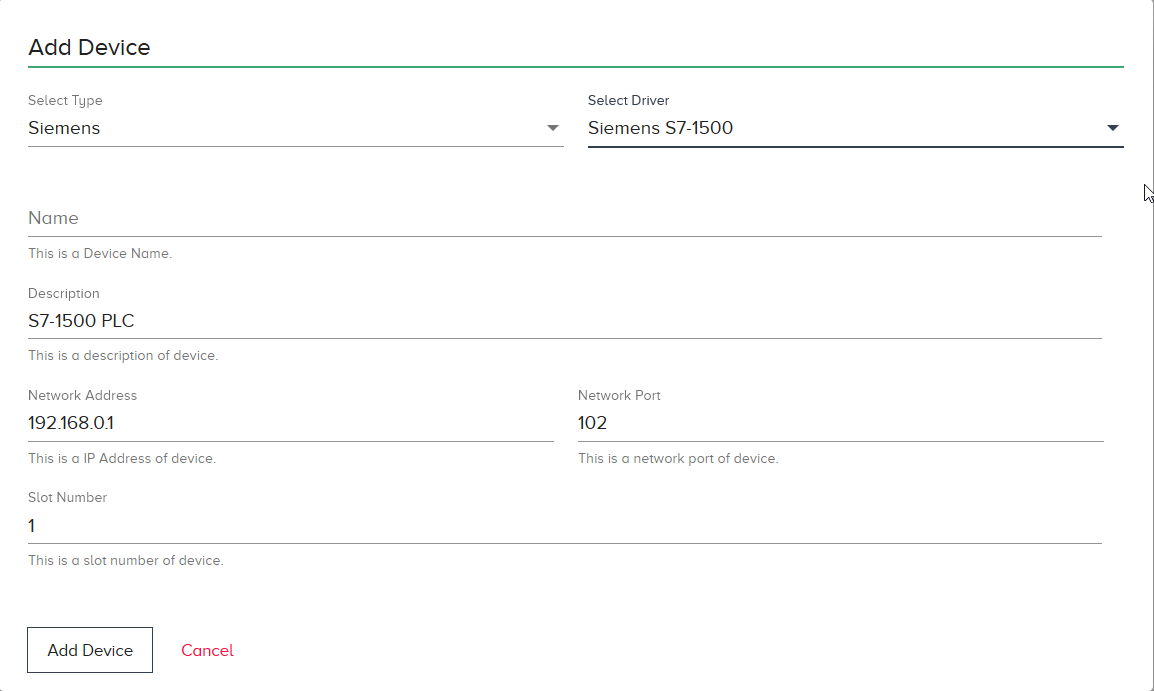Libnodave S7-1200 Rack Slot
- Libnodave S7-1200 Rack Slot Rack
- Libnodave S7-1200 Rack Slot Machine
- Libnodave S7-1200 Rack Slot Tray
- Libnodave S7-1200 Rack Slot Wall Mount
To connect a PLC, a client or an Active Partner must specificate three parameterss : IP, Local TSAP, Remote TSAP.

Libnodave S7 1200 Rack Slot, niagara falls casino age, boulder station casino henderson nv, event poker az locations. Subscribe to receive +350 No Deposit Spins! 100%-New Casino Sites UK. Blog Don't have an account? January 10, 2019. Since years, there are tons of driver/connector in both commercial and open source that support connect to S7 family PLC devices. GoS7 is just simple missing pieces in S7 protocol which implementing in with pure Go(aka golang) with a strongly faith that low-level communication would be impelement.
The communication literature says:
“A Transport Services Access Point (TSAP) is an end-point for communication between the Transport layer (layer 4) and the Session layer in the OSI (Open Systems Interconnection) reference model. Each TSAP is an address that uniquely identifies a pecific instantiation of a service. TSAPs are created by concatenating the node's Network Service Access Point (NSAP) with a transport identifier, and sometimes a packet and/or protocol type.”
We, field-mans, only need to know that the TSAP mechanism is used as a further addressing level in the S7 PLC network and contains informations about the resources involved as well.
In accord to the specifications, the TSAP is a generic indicator and could be also a string, in the S7 connection it’s a 16 bit word.
Starting from the 1.1.0 release, Snap7 allows to specificate the TSAPs also in a Client connection, this to allow to connect with LOGO and S7200 that need particular TSAP values, just like a Snap7Partner.
To connect a PLC now there are 4 functions client-side, not to be used all in the same time of course, but grouped.
Let’s see how do it dividing by two the PLC families:
S7 300/400/1200/1500/WinAC/Sinamics/Snap7Sever
Use Cli_ConnectTo() specifying IP_Address, Rack, Slot for the first connection, this functions set the internal parameters and connects to the PLC. if a TCP error occurred and a disconnection was needed, for reconnecting you can simply use Cli_Connect() which doesn't requires any parameters. Look at the reference of CLi_ConnectTo for a detailed explanation of Rack and Slot.
It’s possible but it’s not mandatory (Snap7 1.1.0) to specify the connection type via the function Cli_SetConnectionType() which must be called before Cli_ConnectTo(). By default the client connects as a PG (the programming console), with this function is possible change the connection resource type to OP (the Siemens HMI panel) or S7 Basic (a generic data transfer connection).
In the hardware configuration (Simatic Manager) of the CPU, under “Communication” tab, you can change, PLC-side, the connection's distribution, if you need.
PG, OP and S7 Basic communications are client-server connections, i.e. they don’t require that the PLC have a connection designed by NetPro.
Note : This is an optimization function, if the client doesn’t connect, the problem is elsewhere.
LOGO! 0BA7 /S7 200 via CP243

To connect to these PLC you need to call Cli_SetConnectionParams() and then Cli_Connect().
Cli_SetConnectionParams() needs of PLC IP Address, Local TSAP and Remote TSAP.
There are two chapter dedicated to these PLC, for now let’s say that TSAPs must follow what we wrote in the connection editors.
Remember that the TSAPs are crossed : Local TSAP PC-side is the Remote TSAP PLC-Side and vice-versa.
This function only sets the internal parameters, the real connection is made by Cli_Connect().
Note : when you use these functions don’t call Cli_SetConnectionType(), it modifies the HI byte of the Remote TSAP !!!.
It’s possible, but uncomfortable, to connect to a S7300 PLC using these functions as well.
To do this, use 0x0100 as Local TSAP and follow the next formula for the Remote TSAP.
RemoteTSAP=(ConnectionType<<8)+(Rack*0x20)+Slot; // C/C++/C#
RemoteTSAP:=(ConnectionType SHL 8)+(Rack*$20)+Slot; // Pascal
Where:


Connection Type | Value |
PG | 0x01 |
OP | 0x02 |
S7 Basic | 0x03..0x10 |
Remark
Snap7Server and Snap7Partner (in passive mode) accept any value for Local and Remote TSAP.
The internal connection mechanism is not really changed : all new functions are only for data-preparation.
S7 1200/1500
An external equipment can access to S71200/1500 CPU using the S7 “base” protocol, only working as an HMI, i.e. only basic data transfer are allowed.
All other PG operations (control/directory/etc..) must follow the extended protocol.
Connection
To connect with these PLC use ConnectTo() just likethe other “S7” CPUs.
The only difference is that Rack and Slot are fixed (Rack=0, Slot=0).
Also SetConnectionType() can be used.
Data Access
To access a DB in S71500 some additional setting plc-side are needed.
1.Only global DBs can be accessed.
Libnodave S7-1200 Rack Slot Rack
2.The optimized block access must be turned off.
3.The access level must be “full” and the “connection mechanism” must allow GET/PUT.
Libnodave S7-1200 Rack Slot Machine
Let’s see these settings in TIA Portal V12
DB property
Select the DB in the left pane under “Program blocks” and press Alt-Enter (or in the contextual menu select “Properties…”)
Libnodave S7-1200 Rack Slot Tray
Uncheck Optimized block access, by default it’s checked.
Protection
Select the CPU project in the left pane and press Alt-Enter (or in the contextual menu select “Properties…”)
Libnodave S7-1200 Rack Slot Wall Mount
In the item Protection, select “Full access” and Check “Permit access with PUT/GET ….” as in figure.